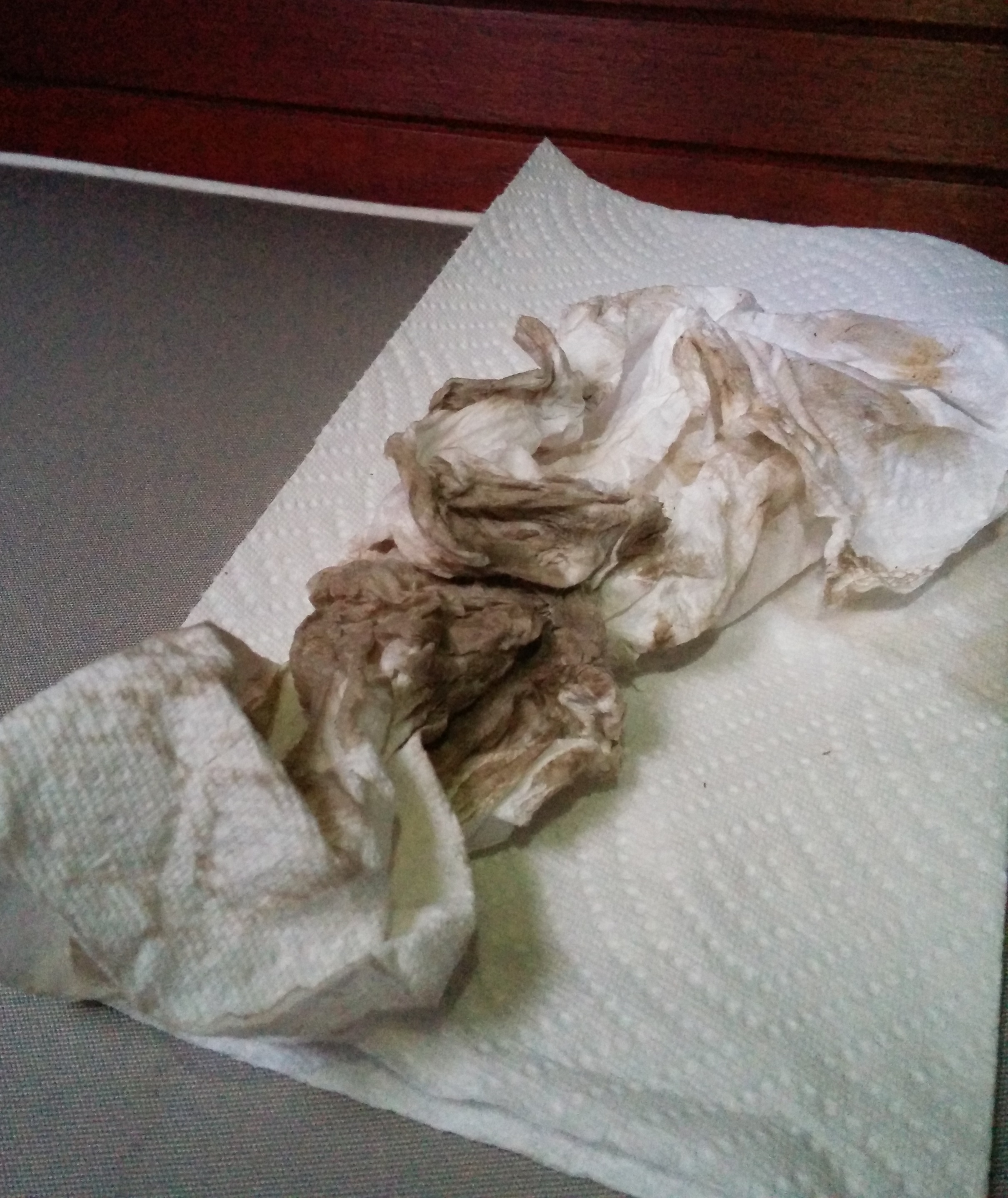Mold is a dreaded word amongst boat owners. Mold is insidious, and sitting in a wet environment doesn’t help a boat’s chances.
Violet Hour had some minor mold on the headliner of the berths. Sitting idle in Vancouver for a few months in the fall and winter while it was for sale hadn’t helped. The surveyor noted it as minor, and I agreed. When we stepped onto the boat, it didn’t smell mildewy or damp like other boats we visited (a couple of which had really bad mold problems!) – Natalie has a sensitive nose, so she was our mold detector, and Violet Hour passed.
But, I discovered I have a sensitivity to mold – a mold allergy. Sleeping on the boat resulted in bloodshot, watery, itchy eyes and a runny nose. Within 8 hours I’d have the symptoms of a cold, and it would last for a couple days. So this minor mold presence became top priority to clean up.
After exploring the boat more we found mold in a few other places, deep inside hard to reach lockers and crevices that are rarely viewed. Many boats in the Northwest probably have some mold and their owners don’t even realize it.

Paper towels after scrubbing mold washed with a bleach water solution
Cleaning up mold is actually really simple.
Steps to Tackling Mold:
- Clean + kill the mold.
- Reduce moisture in the air.
- Fix sources of water being added to the boat interior (leaks).
Supplies:
- bleach
- sponges
- paper towels
- dust mask for nose/mouth
- clear safety eyeglasses (optional)
- dehumidifier (I used this one – the Eva-Dry, which is very compact for storing on the boat)
- *Note: We eventually upgraded to the Eva-Dry EDV-4000, which is much better!
- Damprid (optional)
Other Options I haven’t tried:
- Borax
- Tea tree oil – some say this is a natural mold fighter, but I’m skeptical – it sounds just like the hippie natural supplements store version of Clorox.
- Ozone machine – this is the Big Bertha of mold treatments, and something I would consider a last resort.

Minor mold on the headliner
After two months gradually working on this problem, I’m happy to say the mold is conquered – or at least as much as it ever will be on a boat.
We scrubbed the surfaces with a sponge coated with Clorox or a bleach water solution (about 1 cup per 3 gallons), wiped down surfaces below the headliner that mold might have fallen onto while cleaning, and then ran a dehumidifier. The dehumidifier was run in various sections of the boat for 2-3 days at a time once per week for 3-4 weeks, usually collecting about a ½ cup of water each time.
I also deployed Damprid to 5 or 6 locations around the boat – mainly in galley, cabin and head cubbies that have reduced air flow. I fashioned individual Damprid containers out of leftover plastic food containers because I figured it’s cheaper to buy one 4-pound Damprid bucket rather than 5 or 6 of the individual sized containers.

Damprid 4-pound tub

Homemade Damprid container – inner container with drainage holes in the bottom, inside an outer holding container.
One thing I would do differently next time – wear gloves when working with bleach solution! I stuck my hand in the cleaning bucket each time I wrung out the sponge, and this made my hands a little red and irritated. But what doesn’t kill you makes you stronger right?






